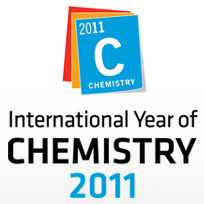In February, we asked for input on training activities relevant to enhancing data reproducibility, which has become a very serious issue for both basic and clinical research. The responses revealed that there is substantial variation in the training occurring at institutions. One reason is that “best practices” training in skills that influence data reproducibility appears to be largely passed down from generation to generation of scientists working in the laboratory.
To increase the likelihood that researchers generate reproducible, unbiased and properly validated results, NIGMS and nine additional NIH components have issued a funding opportunity announcement to develop, pilot and disseminate training modules to enhance data reproducibility. Appropriate areas for the modules include experimental design, laboratory practices, analysis and reporting of results, and/or the influence of cultural factors such as confirmation bias in hypothesis testing or the scientific rewards system. The modules should be creative, engaging, readily accessible online at no cost and easily incorporated into research training programs for the intended audience, which includes graduate students, postdoctoral fellows and beginning faculty.
The application deadline is November 20, 2014, with letters of intent due by October 20, 2014. Applicants may request up to $150,000 in total costs to cover the entire award period. For more details, read the FAQs.


 The launch of the International Year of Chemistry 2011 is a good opportunity to reflect on the NIGMS role in supporting research in this central field of science. NIGMS is the leading institute at NIH in funding chemical research, supporting a range of studies focusing on such areas as the development of synthetic methodologies for new drug discovery and synthesis; the role of metals in biological systems; and the discovery of new analytical techniques for the detection, identification and quantification of human metabolites. In fact, just about every branch of chemistry has a connection to the study of human health.
The launch of the International Year of Chemistry 2011 is a good opportunity to reflect on the NIGMS role in supporting research in this central field of science. NIGMS is the leading institute at NIH in funding chemical research, supporting a range of studies focusing on such areas as the development of synthetic methodologies for new drug discovery and synthesis; the role of metals in biological systems; and the discovery of new analytical techniques for the detection, identification and quantification of human metabolites. In fact, just about every branch of chemistry has a connection to the study of human health.
 Registration is now open for our second Quantitative and Systems Pharmacology Workshop, which will be held September 9-10 on the NIH campus in Bethesda, MD. The meeting is intended primarily for pharmacologists, pharmacokinetic/pharmacodynamic modelers, systems biologists and others working in fields relevant to this emerging discipline.
Registration is now open for our second Quantitative and Systems Pharmacology Workshop, which will be held September 9-10 on the NIH campus in Bethesda, MD. The meeting is intended primarily for pharmacologists, pharmacokinetic/pharmacodynamic modelers, systems biologists and others working in fields relevant to this emerging discipline.